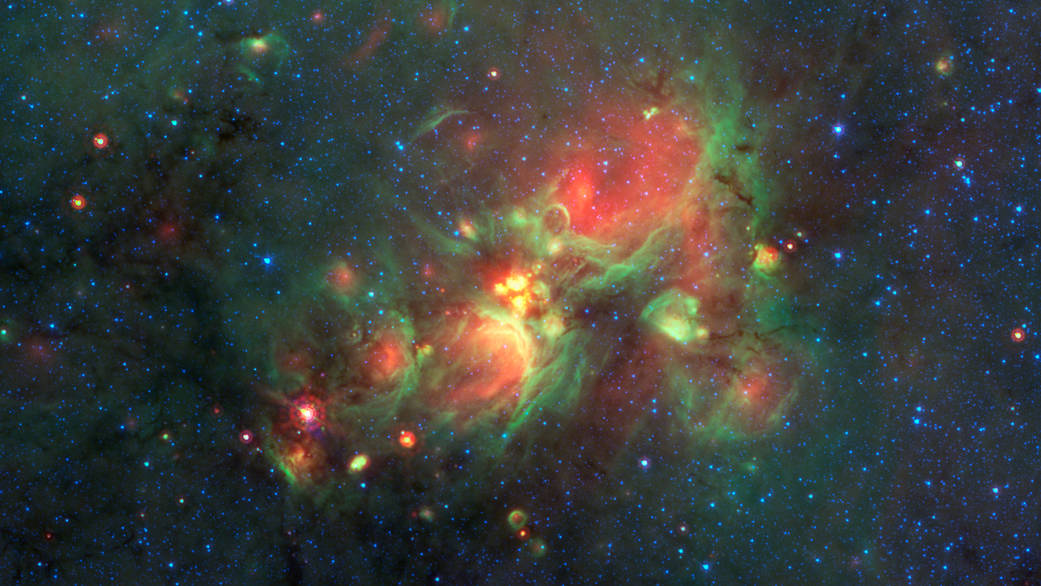Volunteers using the web-based Milky Way Project brought star-forming features nicknamed “yellowballs” to the attention of researchers, who later showed that they are a phase of massive star formation. The yellow balls — which are several hundred to thousands times the size of our solar system — are pictured here in the center of this image taken by NASA’s Spitzer Space Telescope. Infrared light has been assigned different colors; yellow occurs where green and red overlap. The yellow balls represent an intermediary stage of massive star formation that takes place before massive stars carve out cavities in the surrounding gas and dust (seen as green-rimmed bubbles with red interiors in this image).
Infrared light of 3.6 microns is blue; 8-micron light is green; and 24-micron light is red.
Image credit: NASA/JPL-Caltech



























